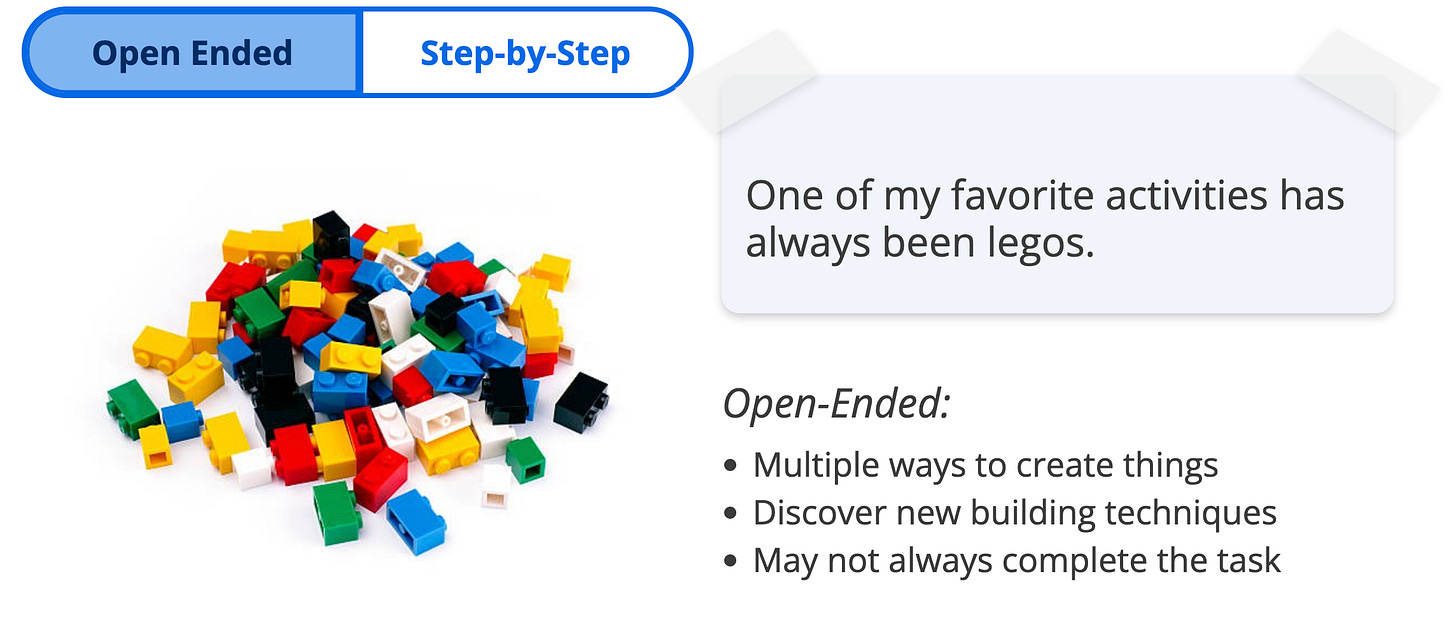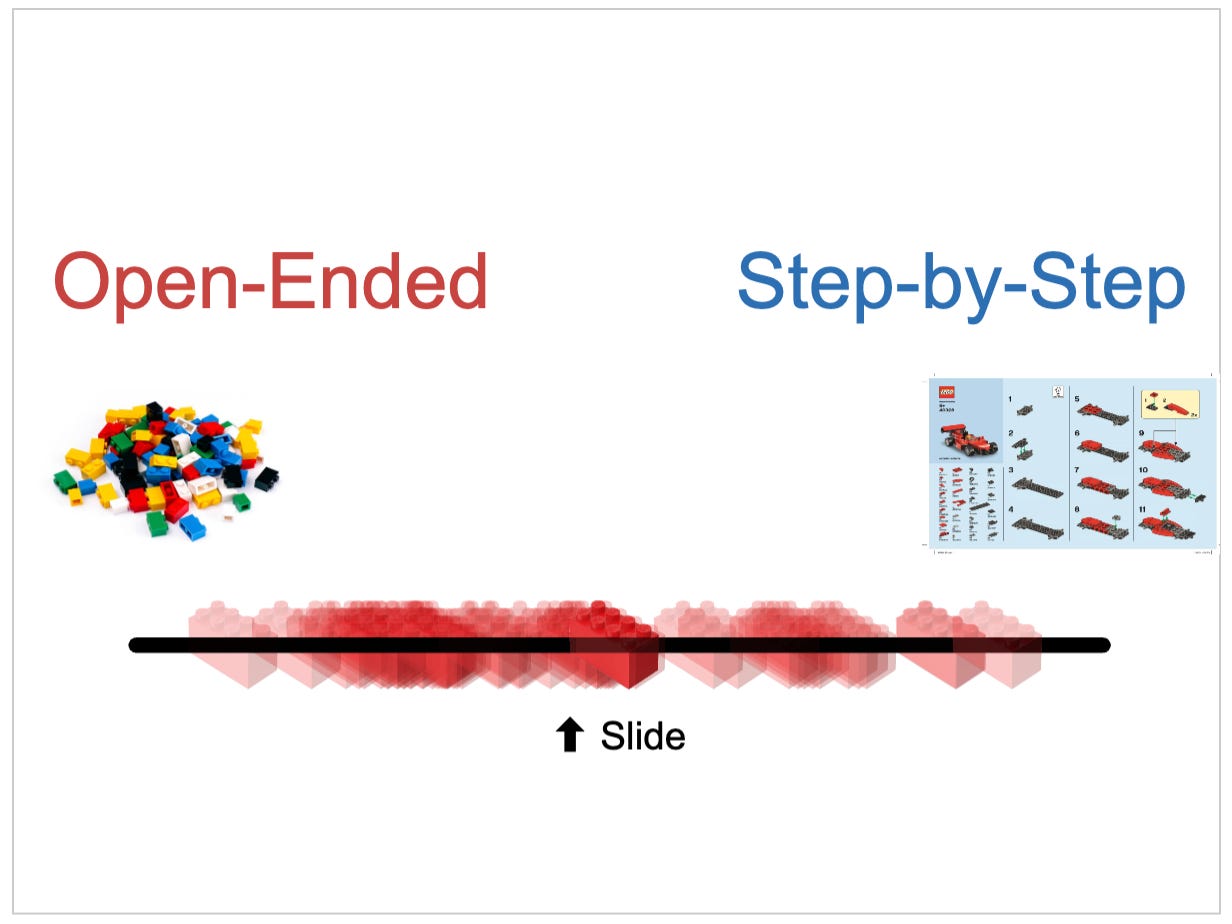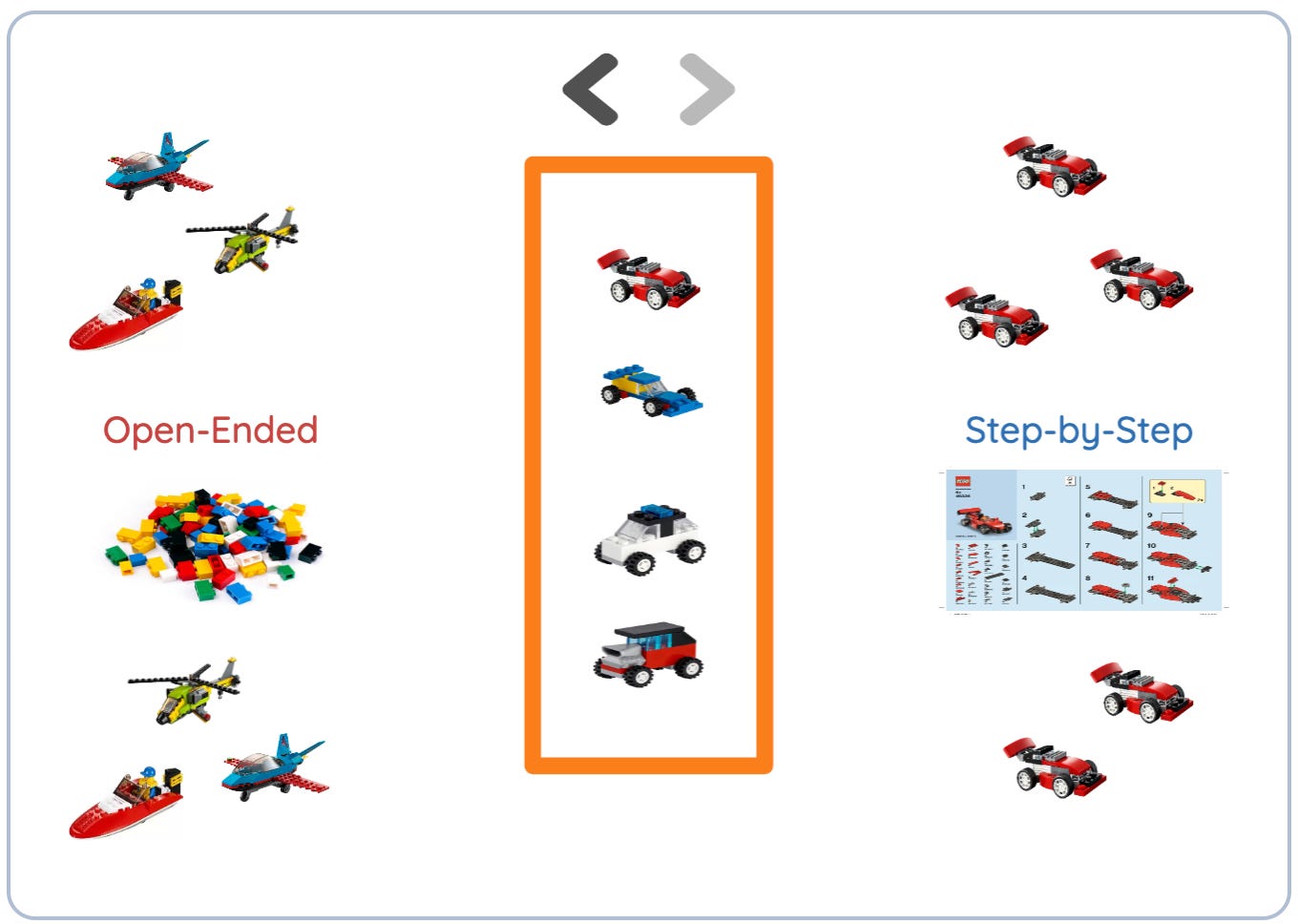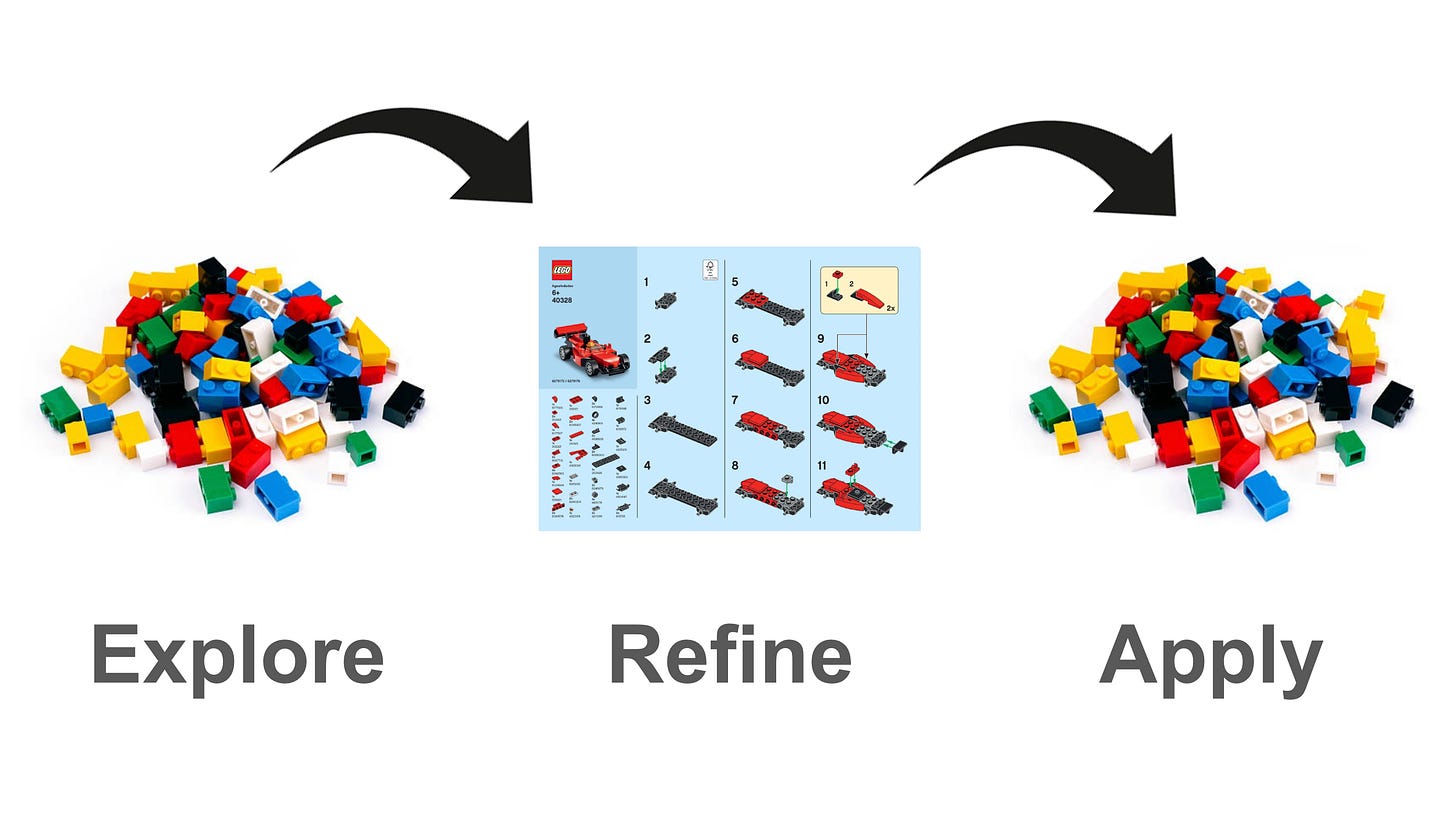Building Math Minds: Lessons from a Bin of Legos
Exploring the power of blending open-ended exploration with structured learning.
One of the things I’ve always loved is Legos.
Growing up, we had this giant, chaotic bin of bricks—classic Legos, Duplos, random action figures, a few questionable items like a decapitated Barbie doll head, and even a half-eaten sucker (don’t ask). With that open bin, I’d dive in and start building. Maybe a castle. Maybe a spaceship. Maybe both depending on where my imagination wandered. Sometimes I’d finish what I started, but often I didn’t. Still, every time I played, I learned something: new building techniques, creative workarounds, unexpected structures. It was messy, unpredictable, and pure open-ended cognitive play.
Fast-forward to today and my Lego habits have shifted. Now, I find joy in the precision of themed sets: Harry Potter, Star Wars, you name it. These builds come in neatly organized bags, with step-by-step instructions that guide you from start to finish. Each step builds on the last. There’s comfort in knowing exactly where you’re going and satisfaction when the final build matches the picture on the box.
So why bring up Legos? Because this tension between open-ended creativity and structured process is exactly what I see in math instruction.
For several years, I’ve asked teachers a simple question: Is math more like the open Lego bin, or the themed Lego set? Unsurprisingly, responses fall all over the spectrum. Some see math as an exploration—a creative sandbox. Others see it as a structured, logical build with clear steps and a defined goal. The truth is: we need both.
If math is always wide open, we run the risk of students “building boats” or “building airplanes” when we really needed a car. But if we only teach in a rigid, step-by-step format, all our students end up building the same exact car lacking room for creativity, prior knowledge, identity, or meaningful understanding.
What we really want is for students to build a car, but to have the freedom to decide if it’s a coupe, a sedan, or a sporty convertible. There’s value in structure, and value in exploration. The magic happens when we balance both.
Where we land on that Lego spectrum might depend on the topic, grade level, or the needs of our students. But maybe the more important question isn’t where, it’s when.
When should we lean into open-ended exploration?
When should we provide step-by-step guidance?
Here’s one way to think about it:
Start with open-ended play. Let students explore, wrestle with concepts, make connections, and invent strategies. Then, bring in the structure. Use the tools they’ve discovered to refine procedures, build fluency, and develop efficiency. Finally, return to open-ended tasks where they can apply what they’ve learned in new and creative ways.
This cycle—explore, refine, apply—builds deep conceptual understanding, procedural fluency, and adaptive reasoning. That’s the real goal of math instruction.
As educators, our job is to find that sweet spot on the Lego spectrum. To know when to let students rummage through the bin and when to hand them the next instruction manual. To nurture creativity and confidence while also guiding them toward mathematical precision and purpose.
Math is not just about following steps or inventing from scratch. It’s about building something meaningful and sometimes, the best builds come from a little bit of both.






